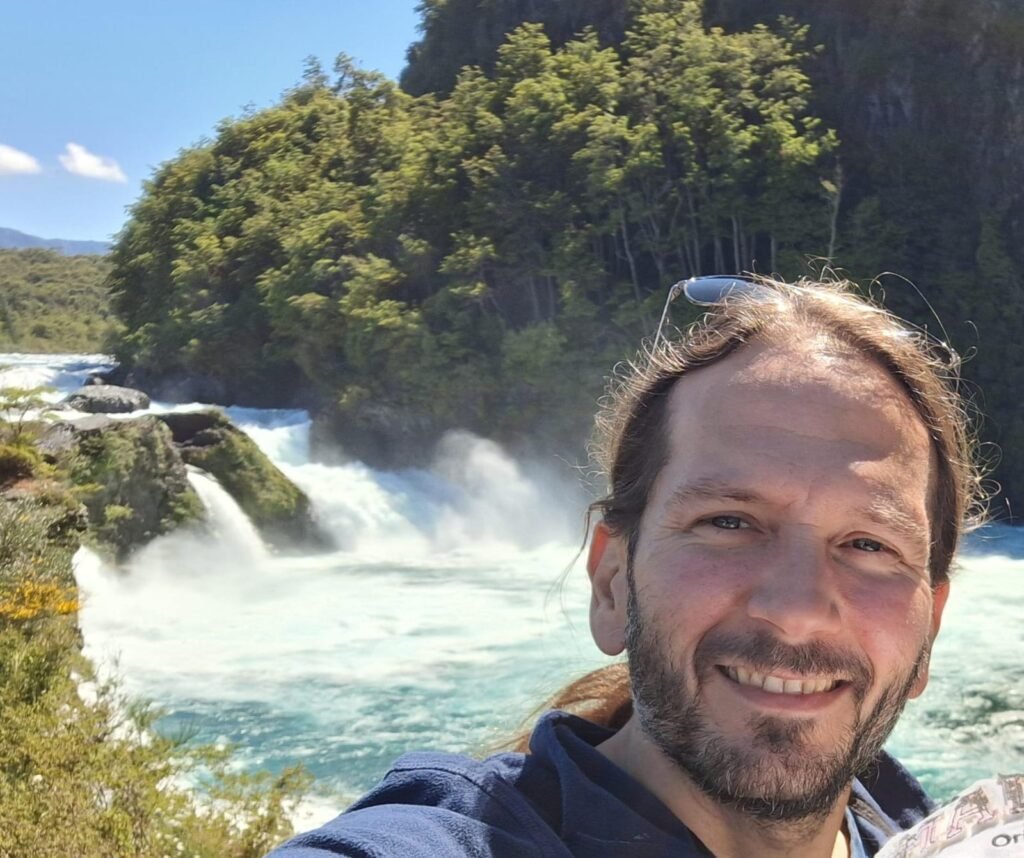Opinion Column: Facundo Gómez
A few weeks ago, I had the opportunity to visit Vicente Pérez Rosales National Park for the first time, in Chile’s Los Lagos Region. Among all its wonders, what struck me the most were the Petrohué Falls. The majestic view of the Osorno volcano, along with the ravines and waterfalls carved out by the river, left me speechless. While taking in this natural spectacle, I couldn’t help but think about how these landscapes tell a story—just like galaxies do in the Universe. This landscape is the result of processes that began tens of thousands of years ago, during the Late Pleistocene, with violent volcanic eruptions that reshaped the Earth’s crust. Then glaciers and meltwater sculpted the basalt rock, leaving behind the "scars" that geologists now use to reconstruct the evolutionary history of this region.
A parallel can be drawn with the formation and evolution of galaxies. Today, we know that these systems—comprising billions of stars gravitationally bound together—exhibit a wide morphological diversity. For instance, there are disk-shaped galaxies like our own Milky Way, and elliptical galaxies like Centaurus A, the closest of its kind. This diversity is the result of numerous physical processes, such as their star formation histories, that have globally shaped galactic structures over time. Yet, just like the Earth’s crust, these structures are not free from disturbances. Many galaxies display local “scars” in their disks, such as warps, ripples, asymmetric patterns (lopsidedness), spiral arms, and even central bars. In their outer regions, we can observe extended stellar streams moving in various directions, forming what are known as galactic halos. These disturbances are not flaws—they are imprints of dynamic events galaxies have experienced, such as gravitational interactions, accretion of matter, or mergers with other galaxies. Like the ravines in basaltic rock, these local features reveal the processes that have shaped not just a galaxy’s appearance, but also its evolutionary history.
Today, we understand that galaxies grow over time through the accretion and merging of smaller satellite galaxies—a process known as galactic cannibalism. During such mergers, satellite galaxies interact closely with the stellar disks of their hosts. The enormous tidal gravitational forces generated in these interactions can disrupt the preexisting stellar disks, pulling them out of equilibrium. For example, a satellite galaxy passing through a stellar disk can cause what’s known as a corrugation pattern—waves in the disk similar to those formed when a stone is thrown into a pond. These ripples can persist for a long time, even after the satellite galaxy has been fully cannibalized. The amplitude and frequency of these waves not only allow us to estimate the size of the satellite galaxy that created them, but also act as a kind of cosmic clock, helping us determine the moment of maximum interaction.
On the other hand, some galaxies display asymmetric patterns, known as lopsidedness. In such galaxies, the stellar disks extend in one direction but are compressed on the opposite side.
Historically, these patterns were thought to result from past interactions with satellite galaxies. However, recent research has revealed that the emergence of such features is closely tied to the galaxy’s early star formation history. On average, lopsided galaxies have had a very different star formation trajectory over the past 10 billion years compared to their more symmetric counterparts. While symmetric galaxies are compact and tend to form early—around 8 to 6 billion years ago—through relatively short but intense bursts of central star formation, lopsided galaxies followed a different path. These galaxies are more extended and assembled over longer time scales, with less intense initial bursts of star formation and a continued accumulation of mass up to the present.
These local “scars”—such as corrugations and asymmetric patterns—not only serve as silent witnesses of past events but also act as windows into the dynamic and star-forming history of galaxies. With the arrival of new observatories in northern Chile, such as the Vera C. Rubin Observatory and the Giant Magellan Telescope, we are on the verge of opening an unprecedented chapter in our ability to explore these cosmic traces. These facilities will enable observations with an unprecedented level of detail and scope, unraveling the processes that shape galaxies and expanding our understanding of the Universe and its evolution.

